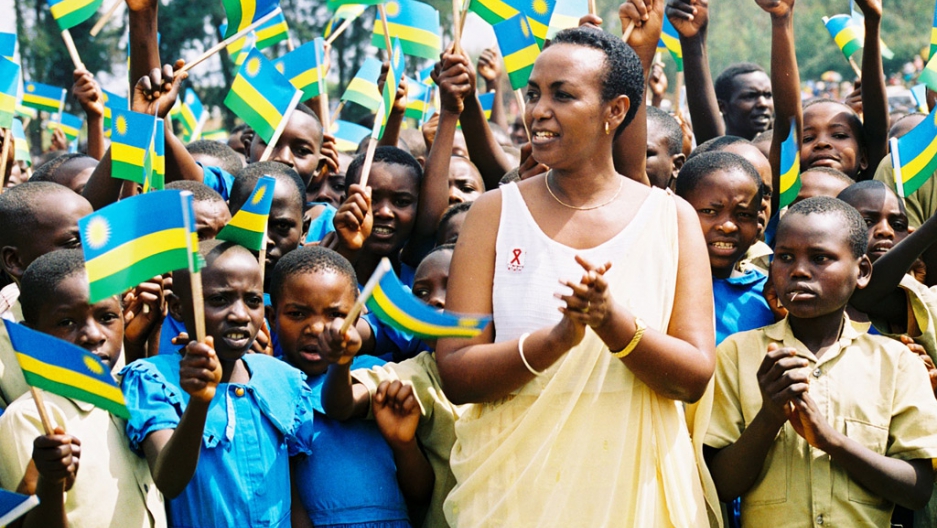Temps de lecture : 10 minutes
References
| ↑1 | UN Committee on the Elimination of Discrimination Against Women (CEDAW), “General recommendation No. 30 on women in conflict prevention, conflict and post-conflict situations”, 1 November 2013, CEDAW/C/GC/30, url: https://www.ohchr.org/documents/hrbodies/cedaw/gcomments/cedaw.c.cg.30.pdf |
|---|---|
| ↑2, ↑7 | Ibid. |
| ↑3 | “Sexual and gender-based violence (SGBV) refers to any act that is perpetrated against a person’s will and is based on gender norms and unequal power relationships”. “Sexual and Gender Based Violence (SGBV) prevention and response”, UNHCR The UN Refugee Agency, accessed 25 February 2021, url: https://emergency.unhcr.org/entry/60283/sexual-and-gender-based-violence-sgbv-prevention-and-response |
| ↑4 | Hancock, Ange-Marie, “When Multiplication Doesn’t Equal Quick Addition: Examining Intersectionality as a Research Paradigm,” 2007, Perspectives on Politics, vol. 5, no. 1, page 64. |
| ↑5 | United Nations High Commissioner for Refugees (UNHCR), “Chapter 10: The Rwandan Genocide and Its Aftermath”, 2000, The State of The World’s Refugees 2000: Fifty Years of Humanitarian Action, url: https://www.unhcr.org/en-ie/3ebf9bb60.pdf. |
| ↑6 | Collins, Patricia Hill, and Sirma Bilge, Intersectionality, 2nd edition, 2020, page 1. |
| ↑8 | Hancock, Ange-Marie, “When Multiplication Doesn’t Equal Quick Addition: Examining Intersectionality as a Research Paradigm,” 2007, Perspectives on Politics, vol. 5, no. 1, [American Political Science Association, Cambridge University Press], page 64. |
| ↑9 | “Kimberlé Crenshaw on Intersectionality, More than Two Decades Later”, 8 June 2017, Columbia Law School, , url: https://www.law.columbia.edu/news/archive/kimberle-crenshaw-intersectionality-more-two-decades-later. |
| ↑10 | Hankivsky, Olena, “Intersectionality 101”, 2014, Institute for Intersectionality Research and Policy, Simon Fraser University, vol. 64, page 2. |
| ↑11 | Segal, Aaron, “Rwanda/ The Underlying Causes: A behind-the-Headlines Report on Bahutu-Batutsi Warfare”, 1964, Africa Report, vol. 9, issue 4, page 2, url: https://search.proquest.com/openview/eba776f34bab41f2214e08b06bbb11d8/1?pq-origsite=gscholar&cbl=1820943 |
| ↑12 | Mamdani, Mahmood, When Victims Become Killers: Colonialism, Nativism, and the Genocide in Rwanda, Princeton University Press, 2001, page 100. |
| ↑13 | Ibid., page 116. |
| ↑14 | Nowrojee, Binaifer, Fleischman, J., Des Forges, A., Longman, T., Rlph, R., Wakabi, K., & Levin, S., “Sexual Violence During the Rwandan Genocide and Its Aftermath”, Human Rights Watch Women’s Rights Project, 1996, page 2, url: https://www.hrw.org/reports/1996/Rwanda.htm. |
| ↑15 | Nowrojee, Binaifer, Fleischman, J., Des Forges, A., Longman, T., Rlph, R., Wakabi, K., & Levin, S., “Sexual Violence During the Rwandan Genocide and Its Aftermath”, 1996, Human Rights Watch Women’s Rights Project, page 2, url: https://www.hrw.org/reports/1996/Rwanda.htm, op. cit. |
| ↑16 | Nowrojee, Binaifer, Fleischman, J., Des Forges, A., Longman, T., Rlph, R., Wakabi, K., & Levin, S., page 20, op. cit. |
| ↑17 | Ibid., pages 20-21 |
| ↑18 | Ibid., page 2 |
| ↑19 | Mamdani, Mahmood, op. cit. |
| ↑20 | Nowrojee, Binaifer, Fleischman, J., Des Forges, A., Longman, T., Rlph, R., Wakabi, K., & Levin, S., page 11, op. cit. |
| ↑21 | Nowrojee, Binaifer, Fleischman, J., Des Forges, A., Longman, T., Rlph, R., Wakabi, K., & Levin, S., page 21, op. cit. |
| ↑22 | Burnet, Jennie E, “Rape as a Weapon of Genocide: Gender, Patriarchy, and Sexual Violence in the Rwandan Genocide”, 2015, Anthropology Faculty Publications, vol. 13, page 1. |
| ↑23, ↑24 | Nowrojee, Binaifer, Fleischman, J., Des Forges, A., Longman, T., Rlph, R., Wakabi, K., & Levin, S., page 2, op. cit. |
| ↑25 | Nowrojee, Binaifer, Fleischman, J., Des Forges, A., Longman, T., Rlph, R., Wakabi, K., & Levin, S., page 18, op. cit. |
| ↑26 | UN General Assembly, “Prevention and Punishment of the Crime of Genocide”, 9 December 1948, A/RES/260, url: https://www.ohchr.org/en/professionalinterest/pages/crimeofgenocide.aspx. |
| ↑27 | See part (b) of Article 2 of the Convention on the Prevention and Punishment of Genocide prohibiting bodily or mental harm to members of the group. |
| ↑28 | Benshoof, Janet, “The Other Red Line: The Use of Rape as an Unlawful Tactic of Warfare”, May 2014, Global Policy, vol. 5, no. 2, page 147. |
| ↑29 | United Nations Security Council Resolution 1820, “Preamble. New York”, 2008, NY: UN, url : https://www.peacewomen.org/SCR-1820. |
| ↑30 | Nowrojee, Binaifer, Fleischman, J., Des Forges, A., Longman, T., Rlph, R., Wakabi, K., & Levin, S., page 2, op. cit. |
| ↑31 | International Criminal Tribunal for Rwanda (1998) Judgment, Prosecutor vs Akayesu, Case No. ICTR-96-4-T, 2 September, url: https://unictr.irmct.org/sites/unictr.org/files/case-documents/ictr-96-4/trial-judgements/en/980902.pdf. |
| ↑32 | Burnet, Jennie E, page 15, op. cit. |
| ↑33 | Nowrojee, Binaifer, Fleischman, J., Des Forges, A., Longman, T., Rlph, R., Wakabi, K., & Levin, S., op. cit. |
| ↑34 | Nowrojee, Binaifer, Fleischman, J., Des Forges, A., Longman, T., Rlph, R., Wakabi, K., & Levin, S., page 3, op. cit.. & Benshoof, Janet, page 153, op. cit. |
| ↑35 | Burnet, Jennie E, “Rape as a Weapon of Genocide: Gender, Patriarchy, and Sexual Violence in the Rwandan Genocide”, Anthropology Faculty Publications, vol. 13, 2015, page 1. |
| ↑36 | Nowrojee, Binaifer, Fleischman, J., Des Forges, A., Longman, T., Rlph, R., Wakabi, K., & Levin, S., “Sexual Violence During the Rwandan Genocide and Its Aftermath”, Human Rights Watch Women’s Rights Project, 1996, page 21, url: https://www.hrw.org/reports/1996/Rwanda.htm. |
| ↑37 | Nowrojee, Binaifer, Fleischman, J., Des Forges, A., Longman, T., Rlph, R., Wakabi, K., & Levin, S., “Sexual Violence During the Rwandan Genocide and Its Aftermath”, Human Rights Watch Women’s Rights Project, 1996, page 11, url: https://www.hrw.org/reports/1996/Rwanda.htm. |
| ↑38 | Burnet, Jennie E, page 20, op. cit. |
| ↑39 | Hancock, Ange-Marie, “When Multiplication Doesn’t Equal Quick Addition: Examining Intersectionality as a Research Paradigm,” 2007, Perspectives on Politics, vol. 5, no. 1, page 65. |
| ↑40 | United Nations High Commissioner for “General Recommendation No. 30 on Women in Conflict Prevention, Conflict and Post-Conflict Situations”, UN Committee on the Elimination of Discrimination Against Women (CEDAW), 1 Nov. 2013, url: https://www.ohchr.org/documents/hrbodies/cedaw/gcomments/cedaw.c.cg.30.pdf |

